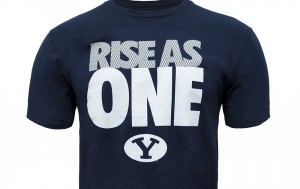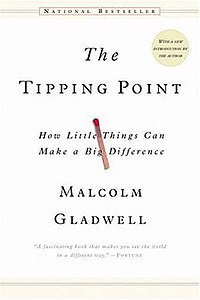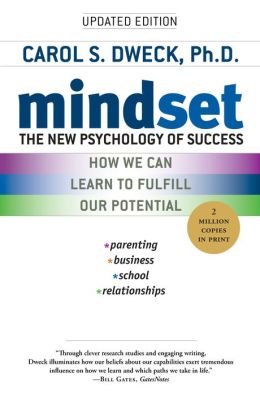
I have a confession -- I'm really bad at relaxing, taking breaks, going on vacation, or anything else that means
just slowing down. Case in point: I haven't eaten yet today, am not likely to stop for lunch (or even eat anything for that matter), and will probably get home later than I'm planing. It's bad and I should be different.
This malady isn't unique to me, and is particularly prevalent in high intensity work environments where there is an expectation to continually crank out new ideas, products, and programs. A few weeks ago, I watched a TED talk from
+Stefan Sagmeister, in which he
argues for the value of extended periods of time off and shares his practice of taking every seventh year off to rejuvenate his creative outlook as a designer. Sagmeister's shop shuts down completely every seven years and he takes off for some kind of exotic place. But, he isn't just lying on the beach sipping fruit drinks. He's relaxing in
productive ways that mean he comes back at the end of the year with ideas and projects that drive his work for the next six years.
Watching the talk did two things: (1) made me feel guilty for not being better at taking time off and (2) made me wonder what an undergraduate student sabbatical might look like.
Sabbaticals (or "
professional development leaves" if you're at BYU where we rename everything), have been a long standing tradition in for faculty members in academia. The goal is to provide time and space for a faculty member to increase expertise, enhance creativity, or take a deep dive into research. Because I'm not in a faculty position and never been on one of these leaves, I can't comment on whether or not they are truly renewing in the hoped for ways (I'd imagine that varies from person to person), but I'm willing to believe that it's a good thing.
So, if it's good for faculty, might it also be good for students?
An initial response from many might be that we already provide students with these opportunities through study abroad programs and internships. Fair enough. I'm willing to accept that
some of these opportunities have the effect of truly being renewing and rejuvenating for students in ways that truly contribute to their academic experience. But, the reality is that study abroad programs and internships touch only a small segment of the student population and, in many cases, are cost prohibitive.
What I'm softly arguing for is consideration of some sort of extended sabbatical as a required aspect of the undergraduate experience and that drives students toward more productive outcomes in the one, two, or three years after their sabbatical experience. My sense is that this sort of thing is happening in pockets on innovative, small, liberal arts campuses. So, if you know about those schools, please let me know so that I can learn from them.
Until then, I'll just have to guess at what the characteristics of this kind of experience might be:
1. Intentional alignment with institutional goals. Because we've been told we have to by accrediting bodies, we all have learning outcomes and institutional aims. The sabbatical should provide an opportunity for students to both
explore these outcomes and
demonstrate their progress toward fulfilling them.
2. Flexibility. For the undergraduate sabbatical to hold meaning for students, they need to take personal responsibility in crafting their experience (just like a faculty member would). While study abroad or an internship might be what they select, students will come up with much more educative experiences if they are given the autonomy to design their own experience.
3. Accountability and Support. This characteristic serves as the necessary balance to #2 above. Most students will need some guidance and support in developing a sabbatical experience. Further, a simple set of criteria for evaluating and approving proposed sabbaticals will provide helpful constraint to students as they are making decisions, as well as ensure that sabbaticals meet their educational purposes. Some kind of formal proposal process should be developed (perhaps a simplified version of the thesis/dissertation defense process).
4. Accessibility. Well resourced and well connected students are already having these kinds of experiences. Institutions need to find ways to extend this opportunity to the rest of the student body. This, of course, will involve finding ways to provide funding for experiences that take a student off-campus. But, it also means providing advisement support (either through professional advisors or faculty advisors) to help students explore and identify suitable experiences, and then navigate the process.
5. Immersion. For a sabbatical to be both restful and impactful, it needs to be long enough and involved enough that a student truly becomes
immersed in a project, new way of living, etc. A year might be too long, but two weeks is definitely too short.
6. Thoughtful consideration of timing. Taking a sabbatical during a student's first semester or first year might be too soon because they may not have a refined enough idea for what type of experience they need and want. Likewise, a sabbatical too late in a student's experience means they won't be able to bring their learning back to campus and use it to shape and inform the rest of their experience. The ideal time seems to be after the first year, but before the fourth year.
7. Bookends to both prepare and debrief students. The first year could be spent helping students develop a plan and proposal for their sabbatical. This would also engage them with faculty members and staff who serve as mentors, involve them in consideration of key questions about what they want to learn and how, and provide direction for decisions about first-year course registration -- all things we want first-year students doing anyway. So, in many ways, providing students with the responsibility of developing this kind of plan can nudge them toward a whole constellation of high-impact practices and behaviors during their first year.
When students return, they can be involved in a similar set of high-impact practices, including developing an integrative report/portfolio/project that reports on their learning and maps out next steps for using their sabbatical as a springboard toward future learning (both at the institution and beyond).
It would be a lot of work and take adaptation for each individual practice, but the "undergraduate sabbatical" would be a way of transforming the undergraduate experience and bringing new meaning and relevance to everything else that a student does during their experience.
 On September 9th, Kevin Worthen will be inaugurated as the 13th president of BYU. I know this because I received a formal invitation to the inauguration activities in my campus mail box last week. Like most of the communications that come from the President's Office at BYU, the invitation was highly formal and signaled the formality and tradition associated with the event. Like most formal invitations, it was also highly impersonal and forgettable, except for the curious image that appeared on the front cover (see below):
On September 9th, Kevin Worthen will be inaugurated as the 13th president of BYU. I know this because I received a formal invitation to the inauguration activities in my campus mail box last week. Like most of the communications that come from the President's Office at BYU, the invitation was highly formal and signaled the formality and tradition associated with the event. Like most formal invitations, it was also highly impersonal and forgettable, except for the curious image that appeared on the front cover (see below): People tend to turn into idiots when they have a microphone, news camera, or reporter in front of them, as demonstrated very well by Cliven Bundy over the last few months. Not only are Bundy's views on government extremist and skewed, it appears that he is also racist and somewhat deluded.
People tend to turn into idiots when they have a microphone, news camera, or reporter in front of them, as demonstrated very well by Cliven Bundy over the last few months. Not only are Bundy's views on government extremist and skewed, it appears that he is also racist and somewhat deluded. 









